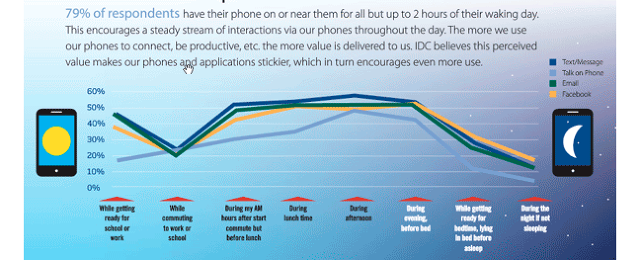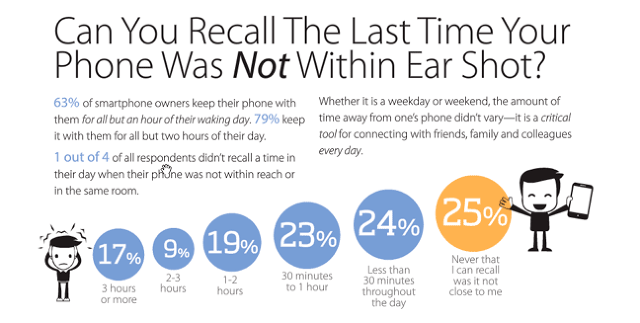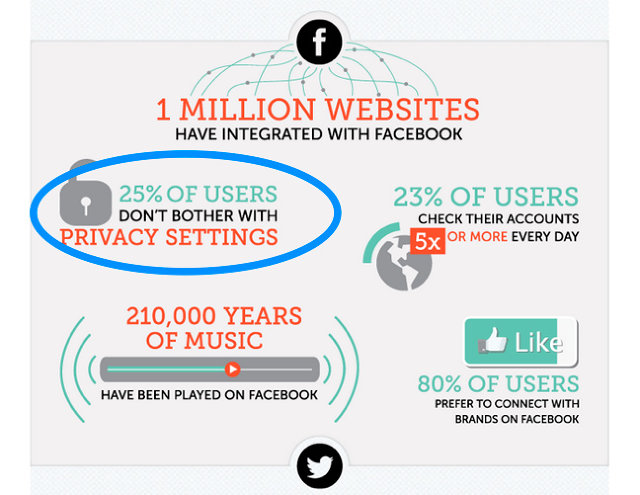The Internet with its ever expanding and enlarging nature will continue to connect more numbers of computers, mobile devices, and other devices/nodes to one another. Thus, the Internet is not just a single network, but rather, it is a collection of "loosely" connected networks accessible by any hub, host, o device connected over the network.
However, with the convenience and easy access to information and ability to connect to the various terminals over the network, there also arises with it various risks. Amongst such of the risks is the issue of security of information accessed, extracted and used over the Internet. Information placed and made readily available over a network (such as the Internet, accessible worldwide) is more readily vulnerable than if such information is placed within a file cabinet within a location. Such information available on the network can be accessed, more copies of it created and worse still, evidence of such access can be hidden.
Thus, for information on the Internet to be termed secured, its availability, confidentiality and integrity needs to be considered and evaluated.
Information accessed, read, copied and used by an unauthorized person makes such information to lose its confidentiality. When such information becomes available over an unsecured network thereby prompting its modification in unexpected and unauthorized ways causes a loss of integrity, and when those authorized to access and use such information cannot have access to it because it has been erased or deleted results in loss of availability.
Gaining unauthorized access to information over an unsecured network is relatively easy while detecting such intrusion is quite hard to do. Rapidly advancing technology and the open nature of the Internet makes it difficult to achieve watertight security. This is why you too must keep an eye on your own safety, especially when downloading files and supplying personal details on the Internet. It's wise for you to take some personal precautions, as this will ensure that any risks related to using the Internet are kept to a minimum.
Internet Vulnerability
Many early network protocols that now form part of the Internet infrastructure were designed without security in mind. Without a fundamentally secure infrastructure, network defense becomes more difficult. Furthermore, the Internet is an extremely dynamic environment, in terms of both topology and emerging technology. Due to the inherent openness of the Internet and the original design of the protocols, Internet attacks in general are quick, easy, inexpensive, and may be hard to detect or trace. An attacker does not have to be physically present to carry out the attack. In fact, many attacks can be launched readily from anywhere in the world - and the location of the attacker can easily be hidden. Nor is it always necessary to "break in" to a site (gain privileges on it) to compromise confidentiality, integrity, or availability of its information or service.
Even so, many sites place unwarranted trust in the Internet. It is common for sites to be unaware of the risks or unconcerned about the amount of trust they place in the Internet. They may not be aware of what can happen to their information and systems. They may believe that their site will not be a target or that precautions they have taken are sufficient. Because the technology is constantly changing and intruders are constantly developing new tools and techniques, solutions do not remain effective indefinitely.
Since much of the traffic on the Internet is not encrypted, confidentiality and integrity are difficult to achieve. This situation undermines not only applications (such as financial applications that are network-based) but also more fundamental mechanisms such as authentication and non-repudiation (see the section on basic security concepts for definitions). As a result, sites may be affected by a security compromise at another site over which they have no control. An example of this is a packet sniffer that is installed at one site but allows the intruder to gather information about other domains (possibly in other countries).
Another factor that contributes to the vulnerability of the Internet is the rapid growth and use of the network, accompanied by rapid deployment of network services involving complex applications. Often, these services are not designed, configured, or maintained securely. In the rush to get new products to market, developers do not adequately ensure that they do not repeat previous mistakes or introduce new vulnerabilities.
Compounding the problem, operating system security is rarely a purchase criterion. Commercial operating system vendors often report that sales are driven by customer demand for performance, price, ease of use, maintenance, and support. As a result, off-the-shelf operating systems are shipped in an easy-to-use but insecure configuration that allows sites to use the system soon after installation. These hosts/sites are often not fully configured from a security perspective before connecting. This lack of secure configuration makes them vulnerable to attacks, which sometimes occur within minutes of connection.
Finally, the explosive growth of the Internet has expanded the need for well-trained and experienced people to engineer and manage the network in a secure manner. Because the need for network security experts far exceeds the supply, inexperienced people are called upon to secure systems, opening windows of opportunity for the intruder community.
Internet Security
Internet security encompasses computer security specifically related to the Internet, often involving browser security but also network security on a more general level as it applies to other applications or operating systems on a whole. Its objective is to establish rules and measures to use against attacks over the Internet. The Internet represents an insecure channel for exchanging information leading to a high risk of intrusion or fraud, such as phishing. Different methods have been used to protect the transfer of data, including encryption and use of firewalls.
A firewall controls access between networks. It generally consists of gateways and filters which vary from one firewall to another. Firewalls also screen network traffic and are able to block traffic that is dangerous. Firewalls act as the intermediate server between SMTP and HTTP connections.
Role of firewalls in Internet security and web security[edit]
Firewalls impose restrictions on incoming and outgoing packets to and from private networks. All the traffic, whether incoming or outgoing, must pass through the firewall; only authorized traffic is allowed to pass through it. Firewalls create checkpoints between an internal private network and the public Internet, also known as choke points. Firewalls can create choke points based on IP source and TCP port number. They can also serve as the platform for IPsec. Using tunnel mode capability, firewall can be used to implement VPNs. Firewalls can also limit network exposure by hiding the internal network system and information from the public Internet.
Security Technology
A variety of technologies have been developed to help organizations secure their systems and information against intruders. These technologies help protect systems and information against attacks, detect unusual or suspicious activities, and respond to events that affect security. In this section, the focus is on two core areas: operational technology and cryptography. The purpose of operational technology is to maintain and defend the availability of data resources in a secure manner. The purpose of cryptography is to secure the confidentiality, integrity, and authenticity of data resources.
Operational Technology
Intruders actively seek ways to access networks and hosts. Armed with knowledge about specific vulnerabilities, social engineering techniques, and tools to automate information gathering and systems infiltration, intruders can often gain entry into systems with disconcerting ease. System administrators face the dilemma of maximizing the availability of system services to valid users while minimizing the susceptibility of complex network infrastructures to attack. Unfortunately, services often depend on the same characteristics of systems and network protocols that make them susceptible to compromise by intruders. In response, technologies have evolved to reduce the impact of such threats. No single technology addresses all the problems. Nevertheless, organizations can significantly improve their resistance to attack by carefully preparing and strategically deploying personnel and operational technologies. Data resources and assets can be protected, suspicious activity can be detected and assessed, and appropriate responses can be made to security events as they occur.
One-Time Passwords. Intruders often install packet sniffers to capture passwords as they traverse networks during remote log-in processes. Therefore, all passwords should at least be encrypted as they traverse networks. A better solution is to use one-time passwords because there are times when a password is required to initiate a connection before confidentiality can be protected.
One common example occurs in remote dial-up connections. Remote users, such as those traveling on business, dial in to their organization's modem pool to access network and data resources. To identify and authenticate themselves to the dial-up server, they must enter a user ID and password. Because this initial exchange between the user and server may be monitored by intruders, it is essential that the passwords are not reusable. In other words, intruders should not be able to gain access by masquerading as a legitimate user using a password they have captured.
One-time password technologies address this problem. Remote users carry a device synchronized with software and hardware on the dial-up server. The device displays random passwords, each of which remains in effect for a limited time period (typically 60 seconds). These passwords are never repeated and are valid only for a specific user during the period that each is displayed. In addition, users are often limited to one successful use of any given password. One-time password technologies significantly reduce unauthorized entry at gateways requiring an initial password.
Firewalls. Intruders often attempt to gain access to networked systems by pretending to initiate connections from trusted hosts. They squash the emissions of the genuine host using a denial-of-service attack and then attempt to connect to a target system using the address of the genuine host. To counter these address-spoofing attacks and enforce limitations on authorized connections into the organization's network, it is necessary to filter all incoming and outgoing network traffic.
A firewall is a collection of hardware and software designed to examine a stream of network traffic and service requests. Its purpose is to eliminate from the stream those packets or requests that fail to meet the security criteria established by the organization. A simple firewall may consist of a filtering router, configured to discard packets that arrive from unauthorized addresses or that represent attempts to connect to unauthorized service ports. More sophisticated implementations may include bastion hosts, on which proxy mechanisms operate on behalf of services. These mechanisms authenticate requests, verify their form and content, and relay approved service requests to the appropriate service hosts. Because firewalls are typically the first line of defense against intruders, their configuration must be carefully implemented and tested before connections are established between internal networks and the Internet.
Monitoring Tools. Continuous monitoring of network activity is required if a site is to maintain confidence in the security of its network and data resources. Network monitors may be installed at strategic locations to collect and examine information continuously that may indicate suspicious activity. It is possible to have automatic notifications alert system administrators when the monitor detects anomalous readings, such as a burst of activity that may indicate a denial-of-service attempt. Such notifications may use a variety of channels, including electronic mail and mobile paging. Sophisticated systems capable of reacting to questionable network activity may be implemented to disconnect and block suspect connections, limit or disable affected services, isolate affected systems, and collect evidence for subsequent analysis.
Tools to scan, monitor, and eradicate viruses can identify and destroy malicious programs that may have inadvertently been transmitted onto host systems. The damage potential of viruses ranges from mere annoyance (e.g., an unexpected "Happy Holidays" jingle without further effect) to the obliteration of critical data resources. To ensure continued protection, the virus identification data on which such tools depend must be kept up to date. Most virus tool vendors provide subscription services or other distribution facilities to help customers keep up to date with the latest viral strains.
Security Analysis Tools. Because of the increasing sophistication of intruder methods and the vulnerabilities present in commonly used applications, it is essential to assess periodically network susceptibility to compromise. A variety of vulnerability identification tools are available, which have garnered both praise and criticism. System administrators find these tools useful in identifying weaknesses in their systems. Critics argue that such tools, especially those freely available to the Internet community, pose a threat if acquired and misused by intruders.
Cryptography
One of the primary reasons that intruders can be successful is that most of the information they acquire from a system is in a form that they can read and comprehend. When you consider the millions of electronic messages that traverse the Internet each day, it is easy to see how a well-placed network sniffer might capture a wealth of information that users would not like to have disclosed to unintended readers. Intruders may reveal the information to others, modify it to misrepresent an individual or organization, or use it to launch an attack. One solution to this problem is, through the use of cryptography, to prevent intruders from being able to use the information that they capture.
Encryption is the process of translating information from its original form (called plaintext) into an encoded, incomprehensible form (called ciphertext). Decryption refers to the process of taking ciphertext and translating it back into plaintext. Any type of data may be encrypted, including digitized images and sounds.
Cryptography secures information by protecting its confidentiality. Cryptography can also be used to protect information about the integrity and authenticity of data. For example, checksums are often used to verify the integrity of a block of information. A checksum, which is a number calculated from the contents of a file, can be used to determine if the contents are correct. An intruder, however, may be able to forge the checksum after modifying the block of information. Unless the checksum is protected, such modification might not be detected. Cryptographic checksums (also called message digests) help prevent undetected modification of information by encrypting the checksum in a way that makes the checksum unique.
The authenticity of data can be protected in a similar way. For example, to transmit information to a colleague by E-mail, the sender first encrypts the information to protect its confidentiality and then attaches an encrypted digital signature to the message. When the colleague receives the message, he or she checks the origin of the message by using a key to verify the sender's digital signature and decrypts the information using the corresponding decryption key. To protect against the chance of intruders modifying or forging the information in transit, digital signatures are formed by encrypting a combination of a checksum of the information and the author's unique private key. A side effect of such authentication is the concept of non-repudiation. A person who places their cryptographic digital signature on an electronic document cannot later claim that they did not sign it, since in theory they are the only one who could have created the correct signature.
Current laws in several countries, including the United States, restrict cryptographic technology from export or import across national borders. In the era of the Internet, it is particularly important to be aware of all applicable local and foreign regulations governing the use of cryptography.
Other actions that could be taken in order to ensure optimum security over the Internet are as follows:
- Choose strong, unique passwords and ensure they are secured.
- Enable multi-step verification for accounts used over the Internet.
- Ensure your Softwares are Updates.
- Be wary of suspicious emails and alerts.
- Registry scan your computer, networks and applications with updated anti-virus programs where possible..
- Avoid scams and prevent Identity theft.
- Very important, all activities over the Internet should be over a secured network.





























